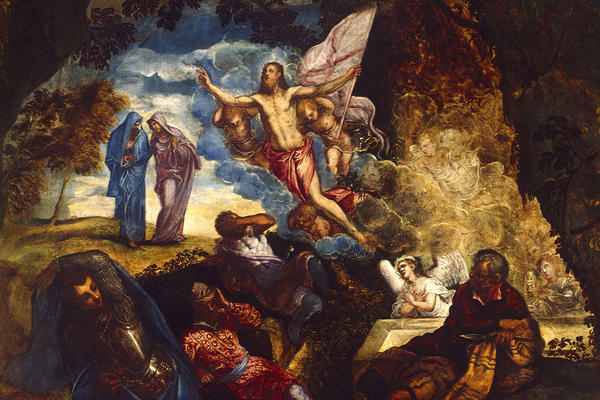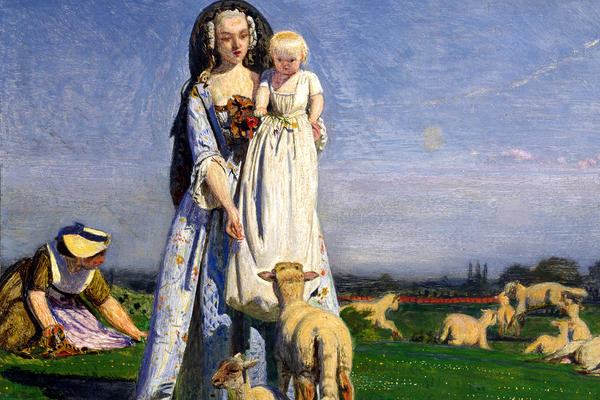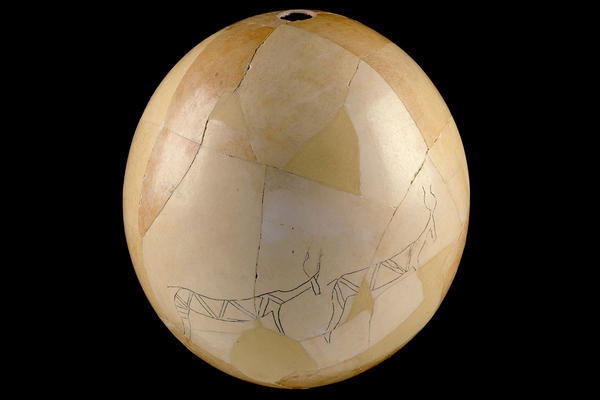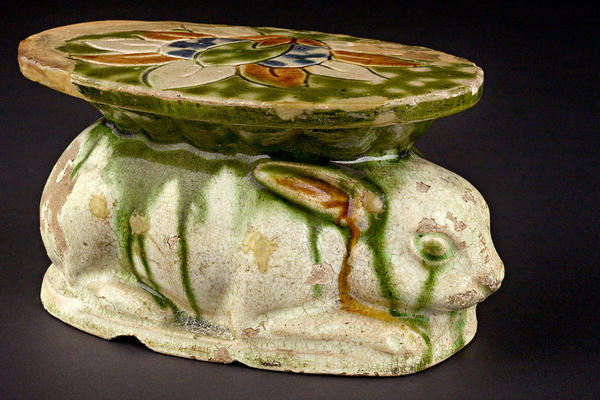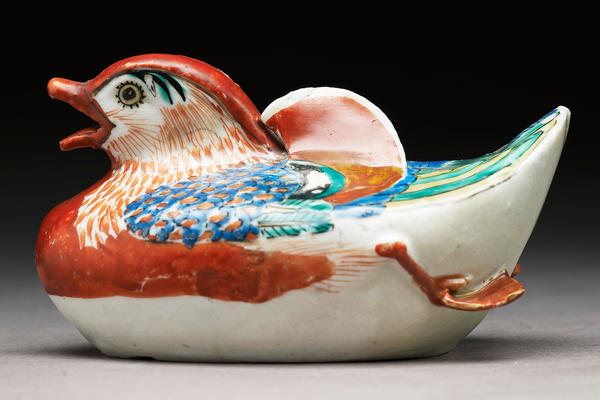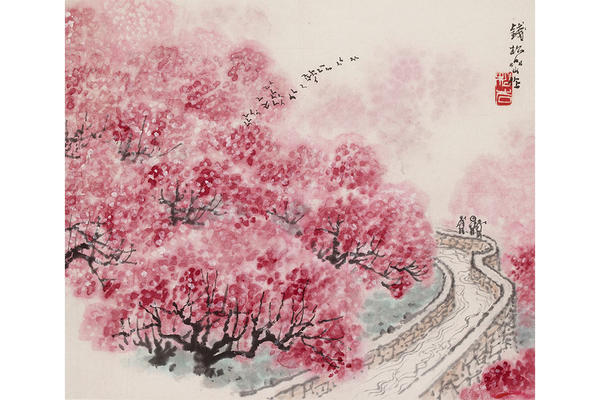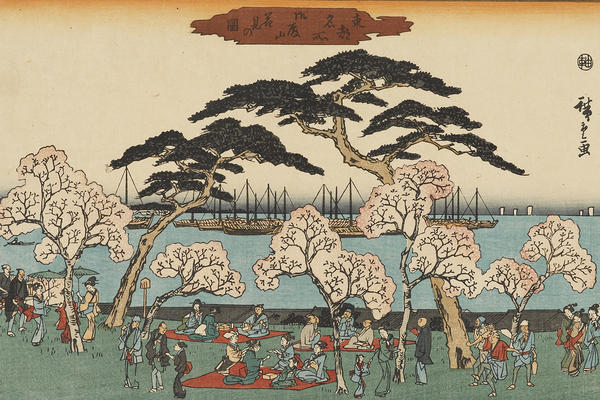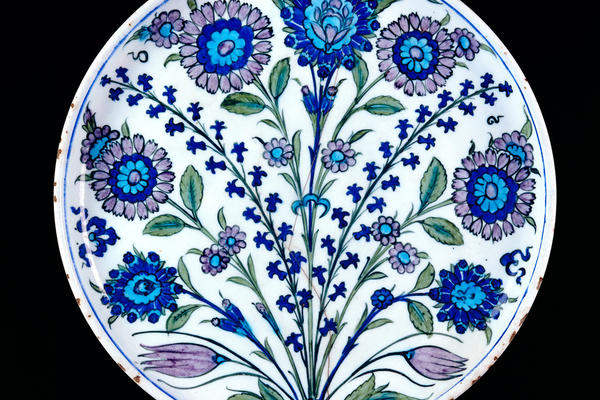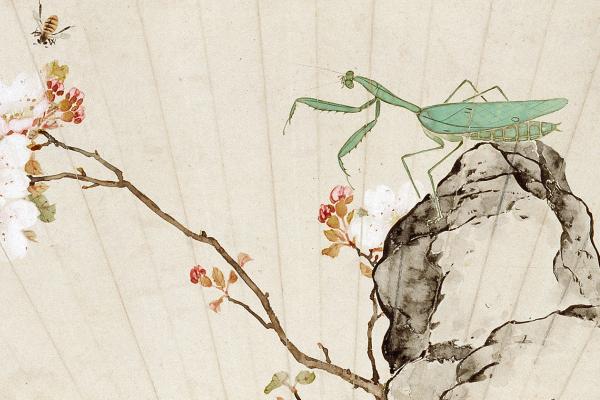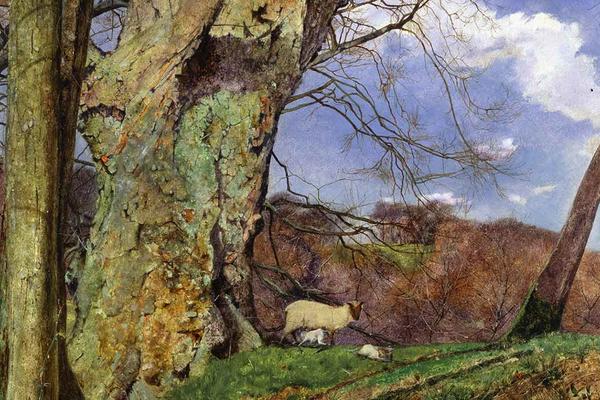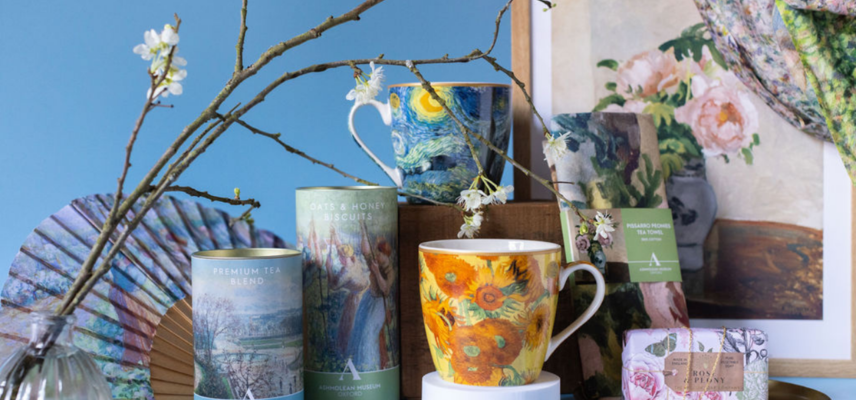CELEBRATING SPRING
A selection of spring-inspired objects from our collection
6-minute read
We’re sharing some of our favourite blossoms, blooms and spring scenes from the collection as we welcome the joys of spring.
This bountiful season has inspired artists from all corners of the world for many, many centuries. Delve into the stories behind these bright and beautiful works and discover our Easter objects trail.
EASTER OBJECTS TRAIL
See what you can spot in the galleries this Easter.
Leaping hare ceramic plate in a pretty turquoise-green glaze, 1670-1730
The Resurrection of Christ by Tintoretto
Ostrich egg-cup holder
The Pretty Baa Lambs by Ford Madox Brown
Decorated ostrich eggshell, inscribed with the royal coat of arms
Prehistoric Egyptian ostrich egg
Ceramic rabbit 'Pillow'
Netsuke rabbit
Water-dropper shaped as a mandarin duck
Leaping hare ceramic plate in a pretty turquoise-green glaze, 1670-1730
The Resurrection of Christ by Tintoretto
Ostrich egg-cup holder
The Pretty Baa Lambs by Ford Madox Brown
Decorated ostrich eggshell, inscribed with the royal coat of arms
Prehistoric Egyptian ostrich egg
Ceramic rabbit 'Pillow'
Netsuke rabbit
SPRING BLOSSOM SLIDESHOW
Suzuribako, or writing box, with cherry trees on a river bank
Peach Blossom Stream in Spring
Cherry blossoms by Okada Gyokuzan
Spring landscape by Qian Songyan
A Jungle Crow on a flowering cherry branch (detail)
View of Cherry Blossoms on Nakano-chō in the Yoshiwara by Utagawa Hiroshige
Kyo-Satsuma vase with ducks and cherry blossom
Festival of Cherry Blossoms by Utagawa Kuniyoshi
Fan with praying mantis, bee, and prunus blossom
Tsuba with heraldic cherry blossoms
Kabuki kimono belonging to Bandō Tamasaburō V with a design of cherry blossom by firelight
Pair of swallows and cherry blossom
Suzuribako, or writing box, with cherry trees on a river bank
Peach Blossom Stream in Spring
Cherry blossoms by Okada Gyokuzan
Spring landscape by Qian Songyan
A Jungle Crow on a flowering cherry branch (detail)
View of Cherry Blossoms on Nakano-chō in the Yoshiwara by Utagawa Hiroshige
SPRING STORIES
Daffodils
By James Brown, 1912–1943

These beautiful watercolour daffodils are by English artist, James Brown. The artist has also used crayon and graphite in the painting.
Born in London in 1863, Brown was a musician who began painting seriously later in life. In 1912 he was introduced to Lucien Pissarro and the two developed a close friendship, often going painting together. This friendship contributed to his enthusiasm for painting and keenness to understand the principles of Impressionism.
Other than a couple of early attempts, James Brown never showed his work in public. Many of his paintings are signed with the pseudonym P. Conway, which he used for many years before returning to his own name.
WA1984.140
View by appointment in the Western Art Print Room
Dish with Flower Sprays
Turkey, Iznik 1530–1550
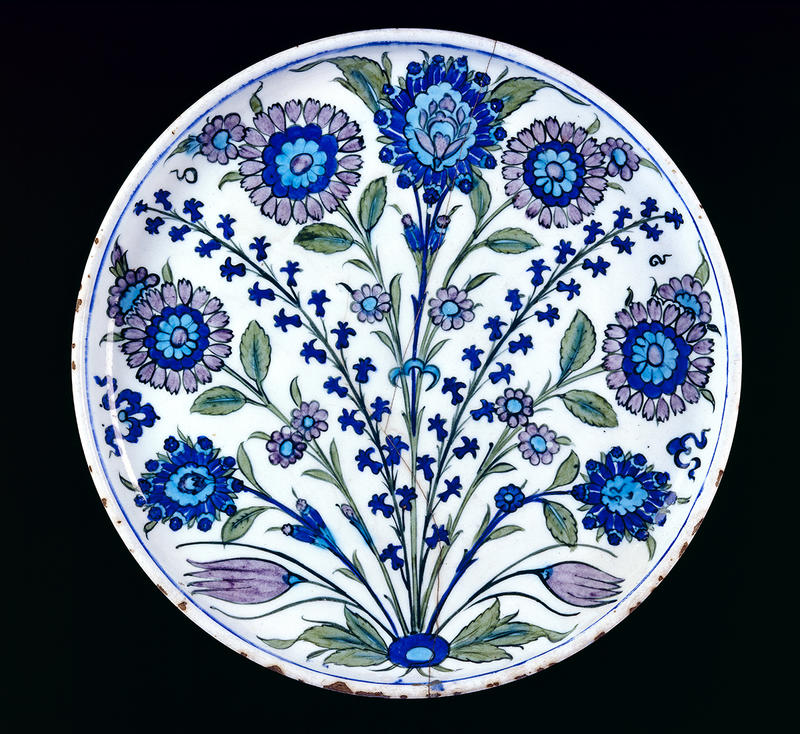
This striking floral plate was made in Iznik, Turkey around 1530–1550, which at the time was under Ottoman rule.
Floral motifs became a hallmark of classical Ottoman art and architectural decoration between the 1500s and 1600s, due to the extensive use and appreciation of flowers in Turkey and neighbouring countries. Blooms like carnations, tulips and hyacinths, to name some of the most popular, were planted in their thousands in both public and private gardens and often adorned people's headgears and attires.
EAX.3277
On display in the Islamic Middle East Gallery 31, first floor
A Study, in March
by John William Inchbold, 1855
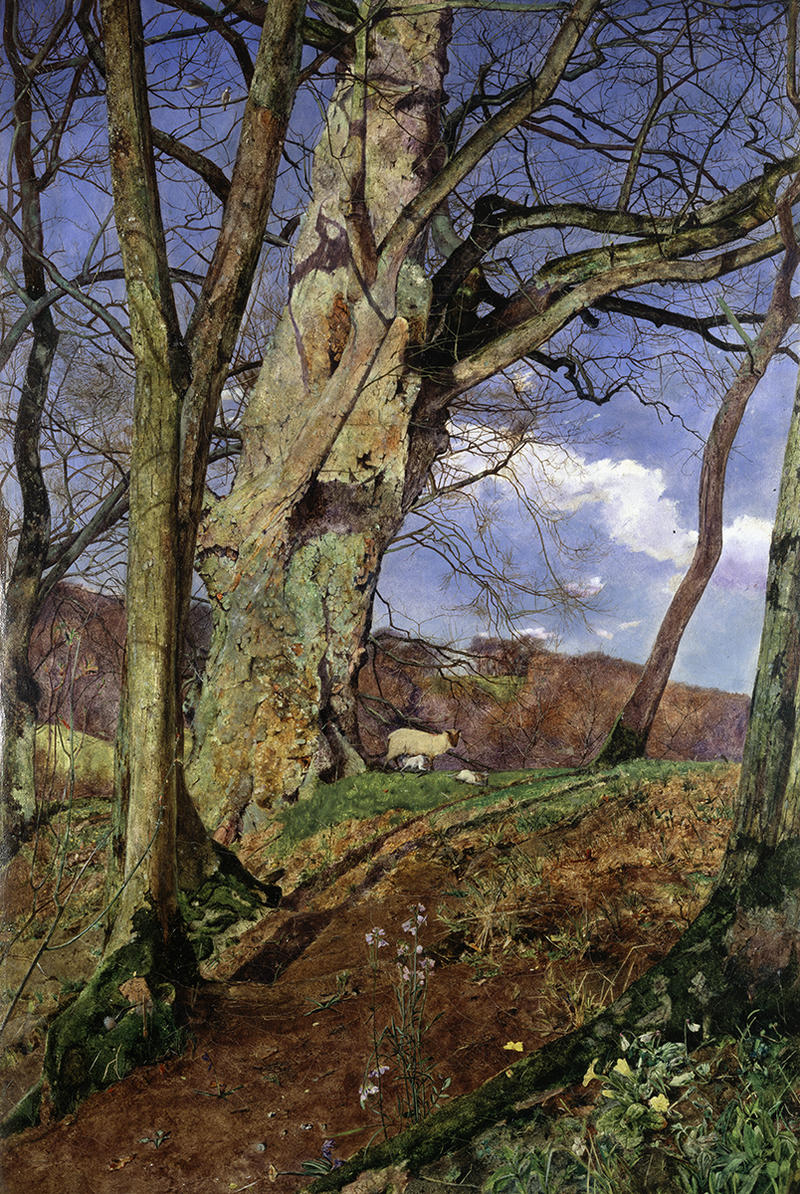
This spring scene was painted by Pre-Raphaelite artist John William Inchbold (1830–1888). It is thought to have been exhibited at the Royal Academy in 1855, and inspired by William Wordsworth's poem, ‘The Excursion’.
John William Inchbold was born in Leeds, Yorkshire, the son of a Yorkshire newspaper owner, Thomas Inchbold. Having shown a talent for drawing as a young man, he moved to London and became a student of the Royal Academy in 1847. This spring painting by him shows the Ruskin-inspired attention to detail and nature celebrated by artists of the Pre-Raphaelite Brotherhood. The primrose and harebells in the foreground and the ewe and two lambs on the ridge, herald the arrival of spring, though the trees are still bare, their branches picked out in sharp detail against the blue sky.
WA1962.4.2
On display in the Pre-Raphaelites Gallery 66, third floor
Cherry Blossom Viewing at Asuka Hill
by Torii Kiyonaga, c. 1775
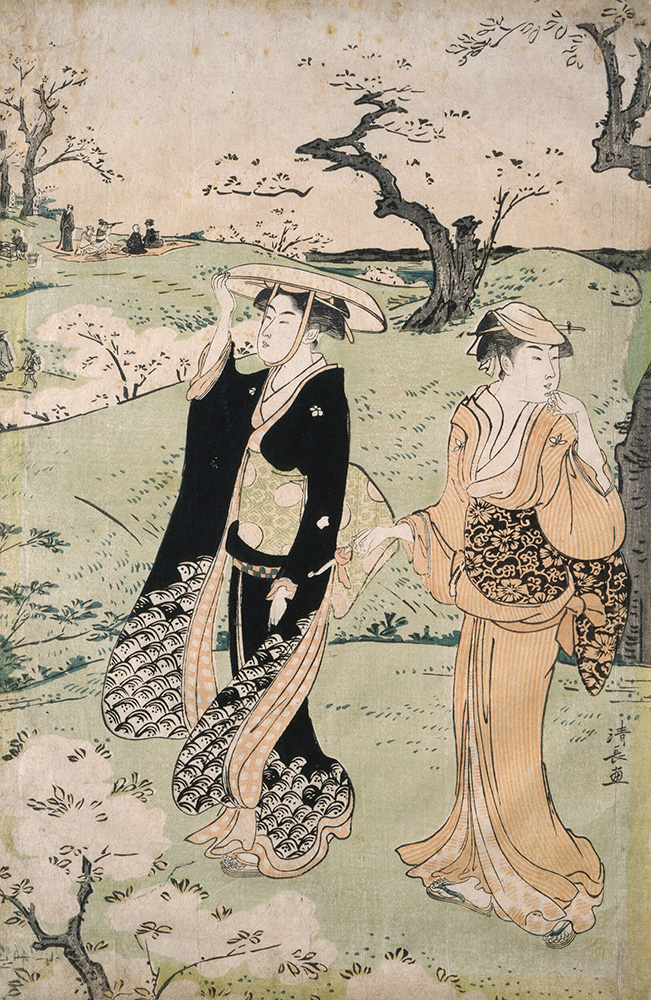
The Japanese tradition of viewing the cherry blossoms in spring is so popular that it has its own name – hanami, or flower viewing.
From the end of March, cherry trees blossom all across Japan and many people plan to visit their favourite hanami sites at 'just' the right moment. In fact, there is even a cherry blossom forecast announced by the Japanese Weather Bureau each year.
The practice is centuries old, and was once limited to the elite of Japanese society. Today people gather in great numbers, hosting picnics and parties under the cherry trees to celebrate the start of spring.
Asuka Hill in Edo (modern Tokyo) was a favourite spot for cherry blossom viewing, which Kiyonaga naturalistically portrays in his illustration above, which is the centre sheet of a triptych. A young woman with a splendid straw hat strolls beneath the blossoms with her maid, who holds a pipe. In the background, there is a party going on under the cherry tree and a lady holding a telescope can be seen in the distance. The cherry blossoms would originally have been pinker but have slightly faded in this print.
Not on display
Gentle Spring
by Frederick Sandys, 1865

A splendid example of Pre-Raphaelite oil painting, this large artwork by Frederick Sandys (1829-1904) was exhibited at the Royal Academy in 1865. The figure was painted in the garden of the poet and novelist, George Meredith. She represents Proserpina returning from the land of the dead. Sandys joined Rossetti's circle in 1857 and lived with him in Cheyne Walk for most of 1866.
See the Gentle Spring painting and Proserpina's story come to life in our animation >
WA1923.2
On display in the Pre-Raphaelites Gallery 66, third floor
Apple Blossom at Dennemont
by Charles Conder, 1893
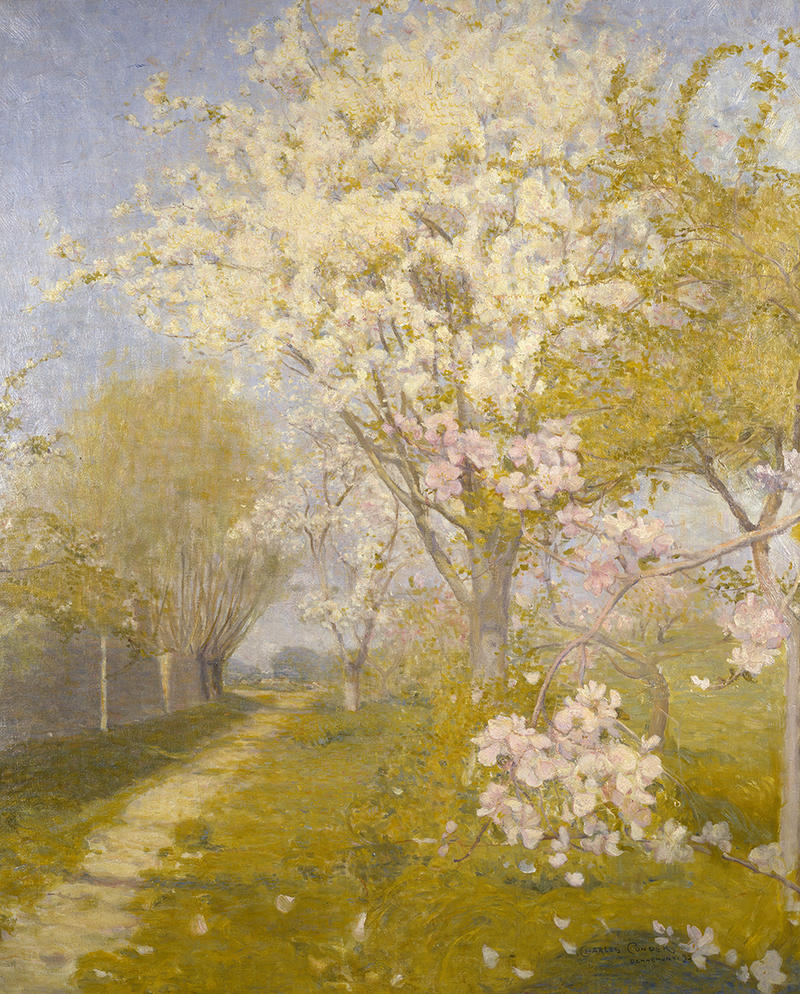
This idyllic scene was painted by English-born painter Charles Conder (1868-1908). Conder emigrated to Australia when he was 16, where he would eventually become a pivotal part of the Heidelberg School - an Australian art movement with marked similarities to French Impressionism.
The group was named after a rural area outside of Melbourne, where the artists gathered to live and paint at an informal artist’s camp called the Mount Eagle Homestead. Members of the Heidelberg movement often painted ‘en plein air’, or out in nature, with an emphasis on light, colour and the use of experimental brush strokes.
Conder painted this picture after he had left Australia for Europe, spending the remainder of his life between France and England. When he arrived in Paris in 1890, he was particularly interested in Monet and Japanese art. He rented a small house in the countryside and often went on painting excursions to nearby towns, including Dennemont, where this was painted.
WA1940.3
Not on display
Cherry Blossom Blizzard (花吹雪)
by Takahashi Hiromitsu, 2013
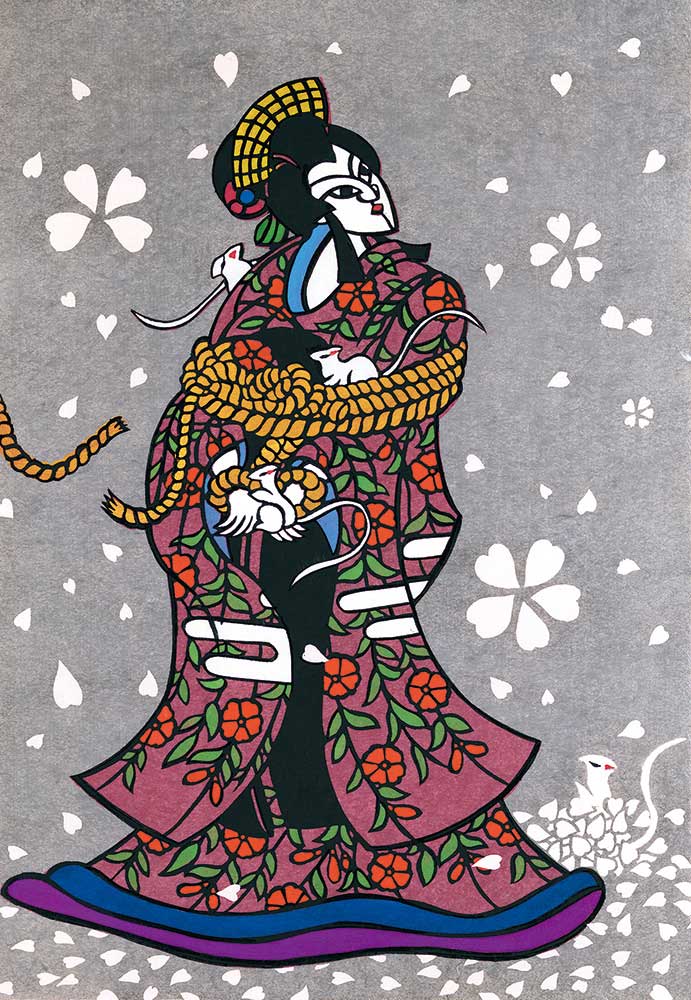
In this colourful stencil print by contemporary Japanese artist Takahashi Hiromitsu, we see a dramatic story from kabuki theatre.
The villainous warrior Daizen has imprisoned Princess Yuki in the Temple of the Golden Pavilion. He orders the Princess, who is from a family of talented artists, to paint a picture of a dragon on the ceiling. When she refuses, Daizen ties her to a cherry tree and takes her husband away to execute him.
As the petals of the cherry blossom fall around her like a snowstorm, the sorrowful Princess gathers up petals with her toes and draws a picture of a mouse with them. The picture is so realistic that it comes to life and gnaws through her ropes to set her free. Hiromitsu shows four separate white mice.
This artwork was on display in our previous Kabuki Legends exhibition that featured in Gallery 29.
EA2020.218
Not on display
Discover more about Hiromitsu's kabuki prints in our YouTube video




